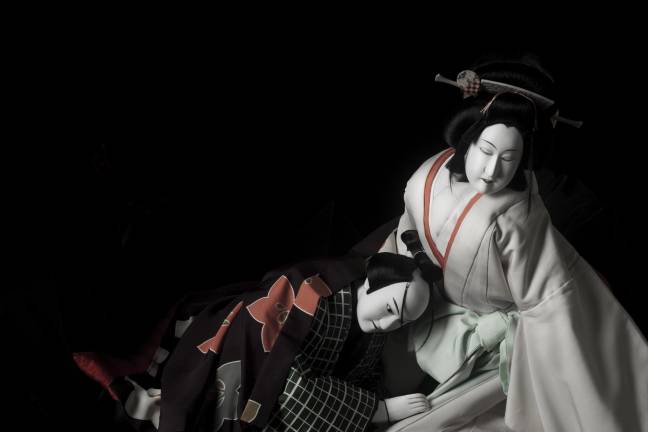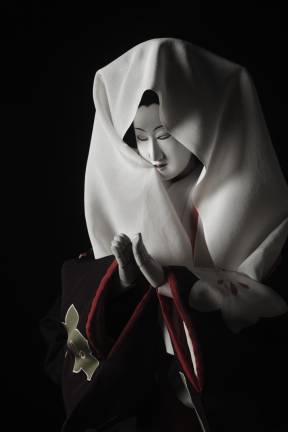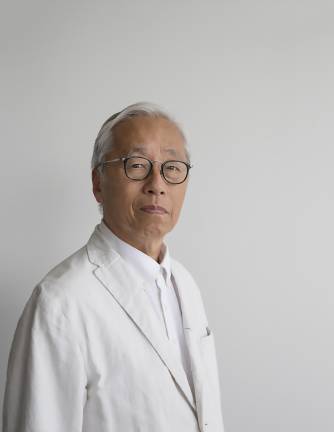Evoking Core Emotions
Artist Hiroshi Sugimoto explains the unique power of traditional Japanese puppetry to capture the pain and beauty of human experience



Lincoln Center's White Light Festival is celebrating its 10th anniversary, once again bringing cross-cultural, multidisciplinary performing artists together from around the world. This year’s program runs from October 19th to November 24th. Roots in spirituality link the performances, and their diversity is dazzling. Highlights include "DruidShakespeare: Richard III" from Ireland’s Druid theater company; Catholic/Celtic inspired choral works by Scottish composer James MacMillan; a tenth anniversary comeback of "The Manganiyar Seduction" performed by Sufi musicians from Northwest India; and Wynton Marsalis' "The Abyssinian Mass" in which Marsalis is joined by The Jazz at Lincoln Center Orchestra.
The festival opens with the US premiere of "Sugimoto Bunraku Sonezaki Shinju" – a form of traditional Japanese puppetry that dates back to the early 17th century – on Saturday October 19th. Its artistic director and creator is Hiroshi Sugimoto, the renowned photographer, sculptor and architect. To acquaint audiences with the ideas behind bunraku, Mr. Sugimoto discussed his work in an interview.
You're renowned for your photography, sculpture, and architecture. How does Sugimoto "Bunraku Sonezaki Shinju" fit in with your other artistic practices?
With stage performances, there’s a very specific sense of situation and place that’s created moment by moment; plus, no two performances are ever quite the same because it’s live. The human urge to see performance in a particular place and to be part of that experience is a strong one. I’ve done a certain amount of research into the mentality of ancient peoples. Theater as an art form performs a key spiritual function for mankind. That’s why it’s become a core part of my work.
How do the three parts of the performance - the puppets, the chanting of the actors, and the shamisen - become one work of art?
There are all kinds of puppet theater around the world, but the majority is directed at children. By contrast, it’s probably fair to describe bunraku as theater for adults. “The Love Suicides” belongs to the sewamono genre—realistic non-period dramas dealing with the lives of ordinary people—and is the story of a messy, doomed love affair between a man and a woman. But bunraku is about more than just enjoying a story; it also attaches a lot of weight to describing the essential emotions, or jо̄, that are at work. It’s structured so that the music of the shamisen and the movements of the puppets play a supporting role, enabling the bunraku narrator to recount and communicate those core emotions. In structural terms, one can see the shamisen music and the movements of the puppets almost as subtitles which exist to serve and reinforce the actor’s narration.
I think you will also be quite startled by the extraordinary quality of the craftsmanship that’s gone into making the stage, the puppets, the whole layout. Japanese aesthetics is multi-layered; it works across many levels.
Time and infinity come up frequently in your work. Is that why you selected "The Love Suicides at Sonezaki?"
“There can be no answer because there is no question” (Marcel Duchamp)
Why is it important to you to revive or continue this art form from the past?
I have no ambition to do anything quite as grandiose as that! The Sugimoto Bunraku started because I was keen to try to recreate the world of “The Love Suicides at Sonezaki” as it was back in the Edo Period. In those days, the performances—which were held any time of the day up until the twilight hours—made use of natural light from the outside, so there was no artificial lighting of any kind. Without wanting to go full Junichiro Tanizaki “In Praise of Shadows,” [an early 20th century treatise on Japanese aesthetics] – try to recreate an authentic Edo Period atmosphere on stage, and what you get is a crepuscular staging which is wrapped in natural light and shadows. Darkness is important for Sugimoto Bunraku. That’s when you get to catch glimpses of the roots and origins of things.
Through the darkness, you can see the silhouettes of the kuroko puppeteers dressed head-to-toe in black. They resemble a group of figures in sculpture and there is something balletic about their movements. For the staging, I actually urged the puppeteers to try to feel as if they were dancing. The idea was that not just the puppets but the puppeteers should also provide tableaux of human figures that moved beautifully. Do something old with complete fidelity and you end up revealing something completely new. That is what Sugimoto Bunraku is doing.
What do you hope the audience will experience while they are at the performance? And what do you hope stays with the audience after they leave?
The strongest response we got when the show was performed in Paris in 2013 was in Le Monde ... The headline was “Hiroshi Sugimoto brings wooden puppets to life." Now if people are prepared to see mere wooden puppets as living things, that’s nothing to do with the puppets, it’s because people are naturally inclined to project their own emotions onto things and get emotionally involved and cry. Another newspaper review proposed that the performance forced the viewer to question the what and the why of human feeling. In that sense, bunraku is an extraordinary form of theater. I want people to experience that in person.
How does that tragic story of "The Love Suicides" fit with the spiritual direction of the White Light Festival?
This play is often compared with “Romeo and Juliet,” but Romeo and Juliet don’t commit suicide because of a love pact. In their case, it’s more like death by misapprehension or simple mistake. Romeo jumps to the wrong conclusion and takes his own life ... I expect people will be drawn to the idea of love suicide, where death becomes the last and only way for the lovers to show each other how they really feel, and driven to tears. Bunraku has its own unusual world view in which something spiritual that lies beyond the bounds of religion can manifest itself.
Interview has been edited for length and clarity.
IF YOU GO
What: "Sugimoto Bunraku Sonezaki Shinju: The Love Suicides at Sonezaki"
Where: Rose Theater, Jazz at Lincoln Center’s Frederick P. Rose Hall
When: October 19–22
lincolncenter.org/white-light-festival